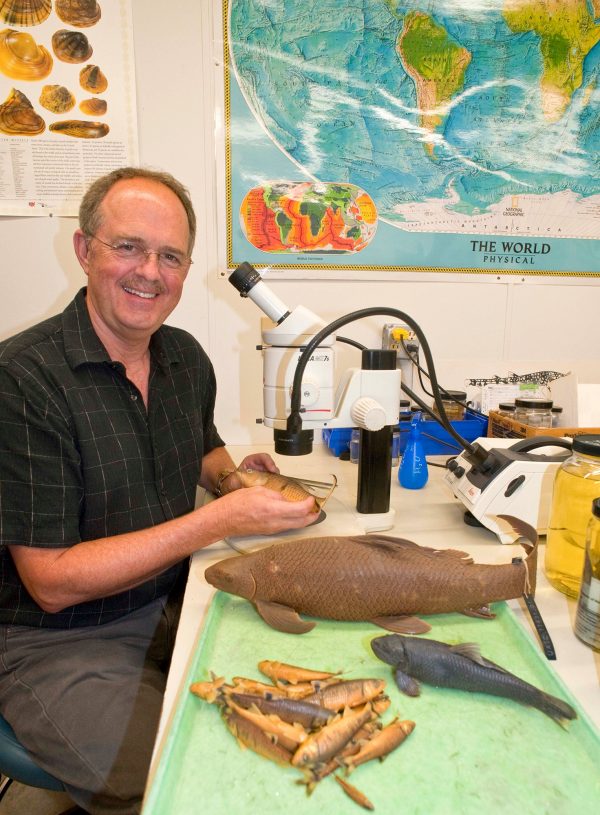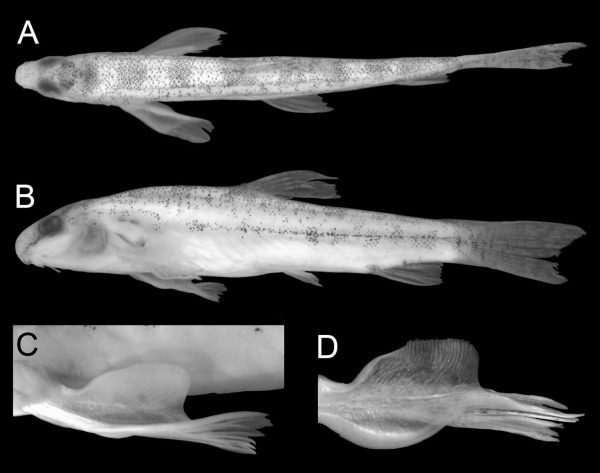Florida Museum of Natural History researchers are leading a worldwide study to inventory the largest order of freshwater fishes with the help of a $2.7 million grant from the National Science Foundation.
The grant, received during the summer of 2010, is part of the Planetary Biodiversity Inventory Initiative, which began in 2003 and aims to identify and catalog every species on Earth by 2025.
Larry Page, Florida Museum ichthyology curator, is principal investigator on the four-year grant and the only researcher to receive two Planetary Biodiversity Initiative grants to date.
Scientists and students from the Florida Museum, Auburn University and St. Louis University, along with about 50 other researchers worldwide, will search for undiscovered species and study known species of the order Cypriniformes (pronounced sy-PRIN-uh-FOR-meez), which includes some of the most economically valuable fish in the world.
Through field work and examining institutional collections, Page expects to describe 1,000 new species in this order, which includes minnows, carp, loaches and suckers.

Florida Museum photo by Jeff Gage
As of August 2010, Page said four new species had been described. Each species was found first in institutional collections, then additional specimens were captured in the wild. The fish are found naturally in Laos, Myanmar, Thailand and Vietnam.
Auburn University graduate student Justin Havird named one of the new species, Lepidocephalichthys zeppelini, because the fish’s pectoral fin reminded him of the double-neck guitar used by Led Zeppelin band member Jimmy Page.
“I’m a big Led Zeppelin fan, and I was listening to them while I was working on the fish,” Havird said. “The structure that makes this species unique just reminded me of the guitar that Jimmy Page played.”
The new species is described in the August issue of the journal Zootaxa.
“Through this inventory, we will gain a better understanding of how diverse cypriniforms are and how they fit into freshwater ecosystems,” said Larry Page, who has been studying fish for more than 30 years. “We will use this information to study the evolutionary relationships of these species and gain a better understanding of how biological communities form and persist.”

Florida Museum photo by Jeff Gage
Identifying these fish is a priority because of their geographic and biological diversity. Many are popular in the pet trade and some are raised for human and pet consumption.
“The top five fishes used for aquaculture worldwide are cypriniforms,” Page said. “Aquaculture is an $86 billion-a-year business and nearly half of all fish consumed worldwide are farm-raised.”
Cypriniforms are found on every continent except Antarctica, Australia and South America. Researchers will focus most of their work in tropical Africa and Asia where diversity is highest and new species are most likely to be discovered.

Florida Museum photo by Larry Page
Teams will capture and identify new species and produce descriptions, web pages and interactive identification keys with information about their ecological characteristics and geographic distribution, Page said.
This information can be used to identify species with diminishing populations, develop conservation strategies and provide a foundation for further studies.
Study co-investigator Jonathan Armbruster, an associate professor and curator of fishes at Auburn University, said about 6 percent, or 4,000 species, of all vertebrates are cypriniforms, making this group of fishes nearly as diverse as mammals.
“You need to know what is out there before you can conserve anything,” Armbruster said. “In much of the world, we aren’t even close to determining this.”
Page received one of the first Planetary Biodiversity Initiative grants in 2003 to study catfish. As a result of this study, scientists have discovered 1,000 new catfish species and created websites that greatly expanded the information available on freshwater fishes.created websites that greatly expanded the information available on freshwater fishes.